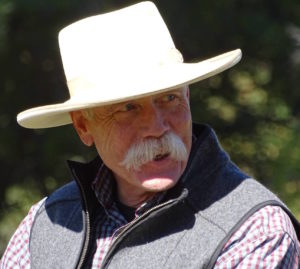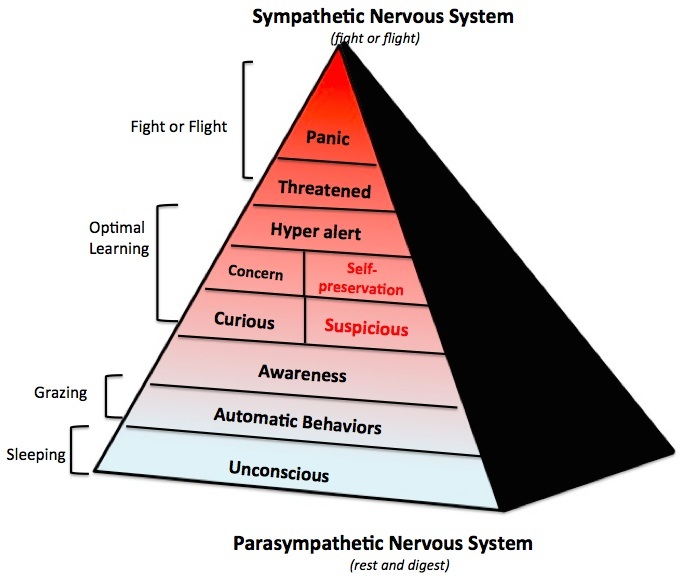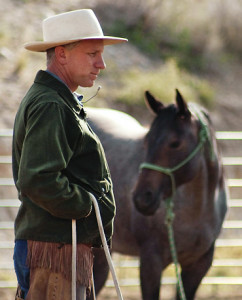
Randy Rieman
“Your circle of comfort and your horse’s circle of comfort – they must constantly expand, otherwise they will shrink.”
That’s what horseman Randy Rieman once told me. I’d thought I could hang out in comfort, where my horse and I would coexist blissfully and enjoy a lifetime of happy riding. Turns out, it ain’t so. Turns out, we must experience some discomfort in order to appreciate comfort.
What is comfort?
- Comfort is a place, a situation, a feel where nothing bad ever happens.
- Comfort can be a protected environment or a state of mind.
We can all be guilty of keeping our horses in that perpetual comfort circle, where nothing is allowed to rile them. But from a neurological perspective, experiencing discomfort may reap far more benefits than rutting oneself in comfort.
Comfort has its neurological home in the autonomic nervous system. Read more. This brain feature is responsible for parasympathetic (“rest & digest”) and sympathetic (“fight or flight”) responses as well as homeostasis, the system’s ability to maintain internal stability. That’s the closest scientific term for what we call comfort. If you think of homeostasis in terms of temperature, it’d be that office-friendly, 70 degrees.
The hypothalamus, part of the brain located under the thalamus in all mammals, is the modulator or thermostat for homeostasis.
In the Evidence Based Horsemanship diagram (at right), co-authors Dr. Steve Peters and Black describe the ideal learning environment as one that takes the horse to a state just outside its comfort range.
It’s a place where:
- the horse feels curious and a bit concerned
- the horse’s ears and eyes will be alert; its head will be above its withers
Ideally, when that moment of learning (and discomfort) is over, the horse will automatically return to its homeostasis and there will be a rush of dopamine (one of the brain’s feel-good neurochemicals). It’s the rainbow after the storm. Read about trailer-loading and dopamine.
Oh, what a feeling!
Horses, like all mammals, crave dopamine. But they don’t get it without feeling stressed first.
“If you never get a horse out of his comfort zone, he’s never going to seek comfort. I help riders learn how to find that dopamine release with their horses,” said Black.
Turns out our homeostasis range or comfort zone can expand or shrink depending on our exposure to different situations and settings and how we manage there.
“Sometimes, with your riding, you have to show your horses that they can live through panicky situations,” added Dr. Peters. “They won’t be reliable unless you put them in those situations and offer them a chance to find comfort or a way back to homeostasis on their own. They will grow and learn when exposed to more situations outside their comfort. But the range of their homeostasis will be very small, if we insist on keeping them there.”
What about Rider Fear?
It’s up to us humans to overcome whatever issues we have with our own comfort and discomfort, in order to do what’s best for our horses.
In the opening clip of 7 Clinics with Buck Brannaman, the Ray Hunt protégé says:
“Fear is a big thing that just owns some people. It can be overwhelming,” he said.
Brannaman implores his students to work with their horses at full speed and to learn how to use flexion and the one-rein stop. Read more about bolting and rider fear here.
“You do need to get a horse to where you can open him up and go. A horse is pretty incomplete if you can’t just open him up and not have him lose his mind. I like to practice dialing him up and dialing him back down.”
Or as the Italian poet, Dante, said some 700 years ago, “We must overact in some measure, in order to produce any effect at all.”


In the past, I was that person that thought I needed to keep my horse from getting upset from the things around him. I didn’t like riding outside the control of an arena and when I did I could not enjoy it because my horse would spook at big rocks, a piece of trash or just an unfamiliar noise. He always seemed ready to bolt, so I was heavy on the reins and holding on with my legs. It was only overtime and with the help of a person who understood that it was me who was confining the horse and my fear that revved him up. I eventually got to a place where I could canter and gallop outside with both of us being relaxed and it was so liberating for me and my horse. I can’t believe all the beautiful sights and sounds we had missed by all those years doing mind numbing circles indoors.